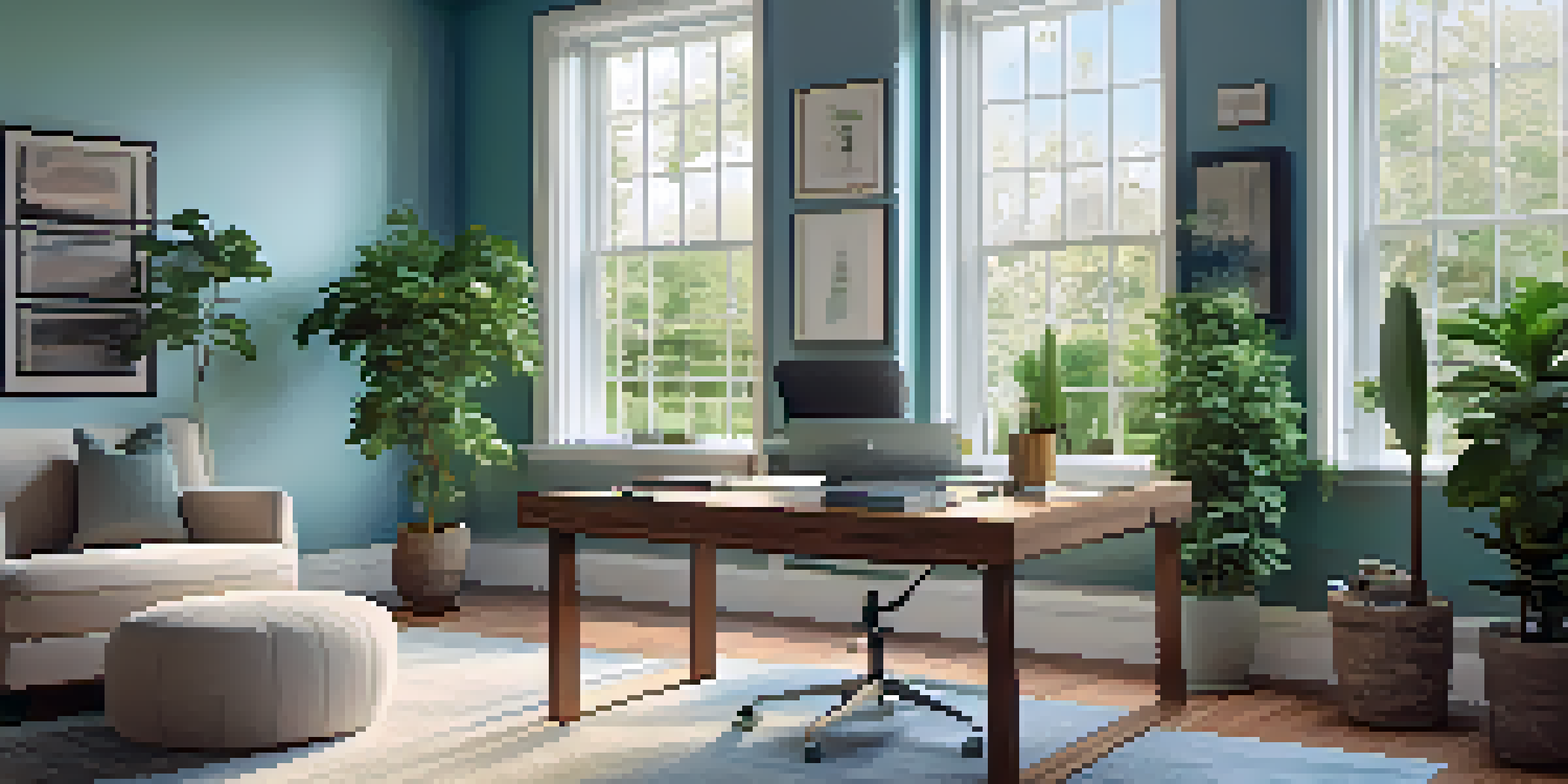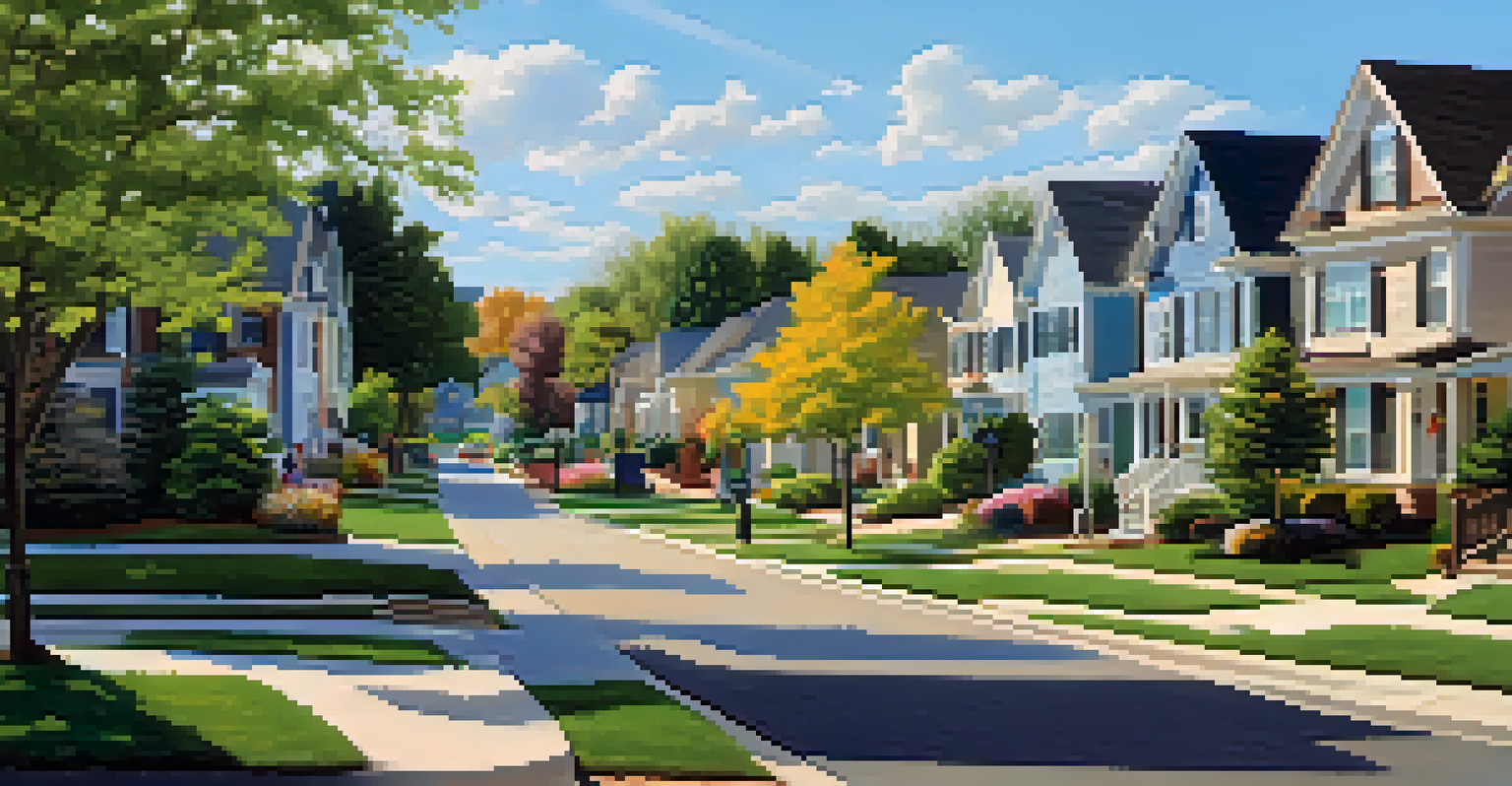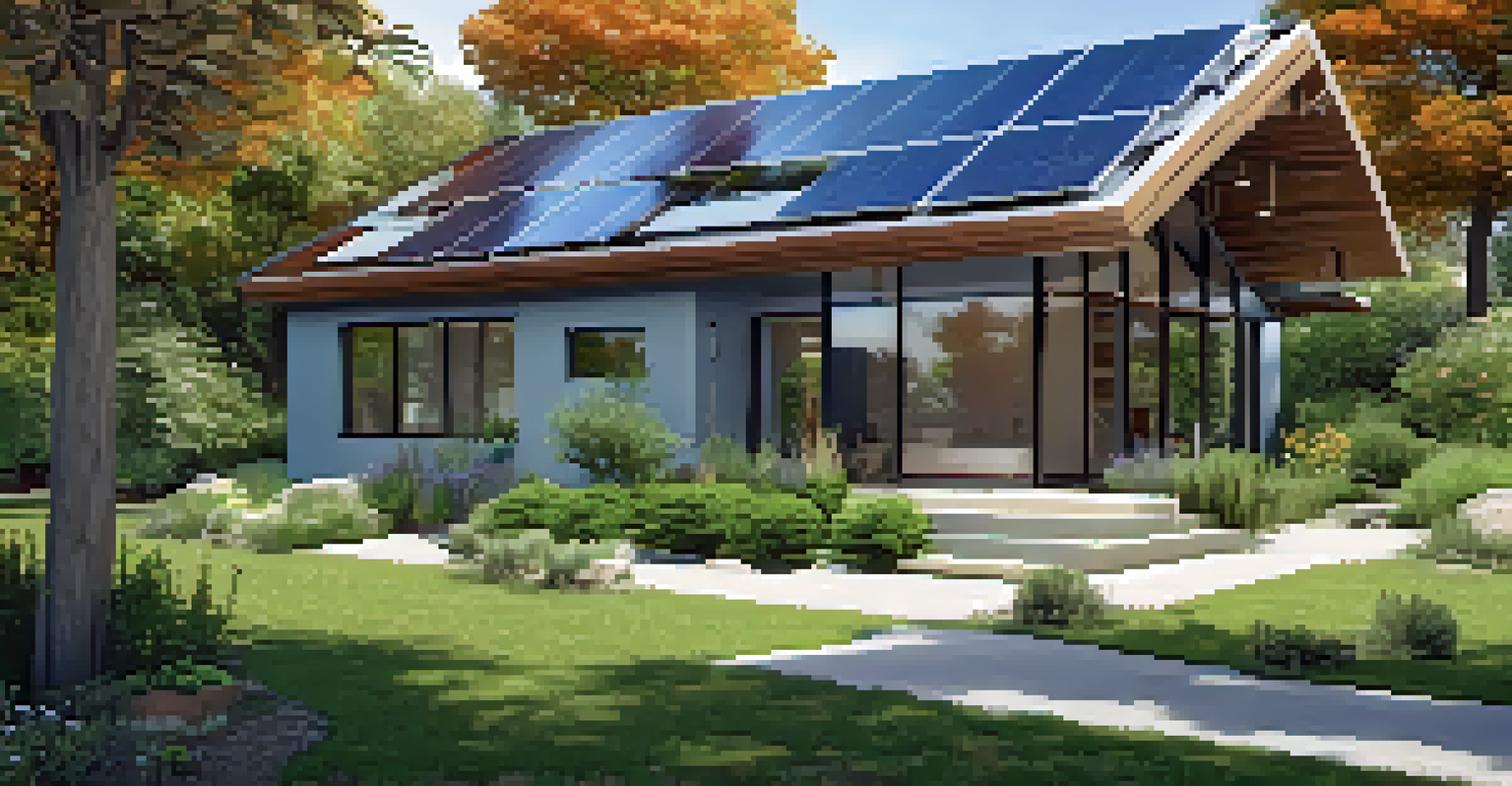Analyzing Charlotte's Housing Demand in a Post-Pandemic World

The Shift in Housing Preferences Post-Pandemic
The pandemic has dramatically changed how people view their living spaces. Many are now prioritizing home offices, outdoor spaces, and larger homes to accommodate remote work and family needs. This shift in preferences is reshaping the housing market in Charlotte, leading to increased demand for specific types of properties.
Home is not a place, it's a feeling.
For instance, homes with dedicated office spaces or those located in quieter neighborhoods are seeing a surge in interest. Buyers are looking for homes that not only provide shelter but also cater to a new lifestyle focused on work-life balance. This change has prompted builders and realtors to rethink their strategies to meet these evolving needs.
Ultimately, the pandemic has encouraged a more thoughtful approach to home buying, where families are investing in spaces that enhance their quality of life. This trend suggests that the traditional metrics of location and price are now accompanied by factors like functionality and comfort.
Current Housing Supply and Its Impact on Demand
Charlotte's housing supply has struggled to keep pace with the growing demand. With an influx of new residents from other states, the competition for available homes has intensified. This imbalance has led to rising prices, making homeownership less accessible for many.

Moreover, the pandemic disrupted construction schedules, resulting in delays that further strained the supply chain. New developments are taking longer to complete, exacerbating the shortage of affordable housing options in the area. As a result, potential buyers may find themselves in bidding wars, which can be both frustrating and costly.
Shift to Home Offices and Space
Post-pandemic, buyers are prioritizing homes with office spaces and outdoor areas to accommodate remote work and family needs.
Addressing this supply issue is crucial for sustainable growth in Charlotte's housing market. Local authorities and developers must work together to create more housing options that meet the needs of a diverse population, ensuring that demand can be met without pushing prices beyond reach.
The Rise of Suburban Living in Charlotte
As remote work becomes more widespread, many Charlotte residents are opting for suburban living. The allure of spacious homes and family-friendly environments is drawing people away from the city center. Suburbs like Ballantyne and Matthews are experiencing a renaissance as families seek more room to breathe.
The best way to predict the future is to create it.
This trend has sparked interest in areas that were once considered less desirable. Buyers are now looking for communities that offer good schools, parks, and a sense of community, which are often found in suburban settings. As a result, home values in these areas are on the rise, reflecting the increasing demand.
The shift to suburban living may have lasting effects on Charlotte's housing landscape. As more people prioritize space and community over proximity to downtown, developers will need to keep up with this demand by creating vibrant, livable suburban environments that cater to families.
Impact of Interest Rates on Housing Demand
Interest rates play a crucial role in shaping housing demand, particularly in the wake of the pandemic. As the Federal Reserve adjusts rates to combat inflation, potential homebuyers are closely monitoring these changes. Lower rates can make mortgages more affordable, driving up demand, while higher rates may dampen enthusiasm.
In Charlotte, the recent fluctuations in interest rates have created a sense of urgency among buyers. Many are rushing to secure homes before rates rise further, leading to increased competition and, consequently, higher home prices. This dynamic can make it challenging for first-time buyers to enter the market.
Surge in Suburban Living Demand
Many Charlotte residents are moving to suburban areas for more space and community amenities, reshaping the housing market.
Understanding the interplay between interest rates and housing demand is essential for both buyers and sellers. As rates continue to evolve, stakeholders must remain vigilant and adapt their strategies to ensure they make informed decisions in this ever-changing landscape.
The Role of Technology in the Home Buying Process
Technology has transformed the way people buy homes, especially in a post-pandemic world. Virtual tours, online listings, and digital paperwork are now standard practices, making the home-buying process more accessible and efficient. This shift has allowed buyers to explore properties without the need for in-person visits, which can be a significant time-saver.
In Charlotte, many real estate agents have embraced these technological advancements, offering their clients innovative tools to streamline the buying process. This includes everything from virtual reality tours to AI-driven market analysis, helping buyers make more informed decisions. As a result, the entire experience has become more user-friendly and less stressful.
As technology continues to evolve, it will likely play an even greater role in the housing market. Embracing these tools can lead to a more dynamic and responsive marketplace, where buyers and sellers are better equipped to navigate the complexities of real estate transactions.
Demographic Changes Influencing Housing Demand
Charlotte's demographic landscape is shifting, and these changes are influencing housing demand. An influx of younger professionals and families is reshaping the market, as these groups often have different needs and preferences than older generations. For instance, millennials and Gen Z prioritize sustainability and walkable neighborhoods, which affects the types of homes that are in demand.
Additionally, the growing diversity within Charlotte's population is leading to a broader range of housing styles and price points. Developers are increasingly focusing on creating mixed-use communities that cater to various demographics, ensuring that everyone has access to housing that meets their needs. This inclusivity is essential for fostering a vibrant community.
Interest Rates Shape Market Dynamics
Fluctuating interest rates are influencing buyer urgency and competition, significantly impacting home prices in Charlotte.
Recognizing and responding to these demographic shifts will be key for stakeholders in Charlotte's housing market. By understanding the unique preferences of different groups, realtors and developers can better position themselves to meet the evolving demands of the community.
Future Trends in Charlotte’s Housing Market
Looking ahead, several trends are likely to shape Charlotte's housing market in the coming years. As remote work remains prevalent, the demand for larger homes with dedicated office spaces will continue. Additionally, the popularity of suburban living suggests that developers will need to focus on creating family-friendly communities with essential amenities.
Sustainability is also becoming a significant factor in home buying decisions. Many buyers are now prioritizing energy-efficient homes and eco-friendly features, pushing builders to adopt greener practices. This trend reflects a growing awareness of environmental issues and a desire for homes that contribute to a healthier planet.

Finally, the integration of smart home technology is expected to rise, making homes more convenient and appealing. Buyers will increasingly seek properties equipped with smart systems that enhance security, energy efficiency, and overall comfort. Keeping an eye on these trends will be crucial for anyone looking to engage with Charlotte's housing market.